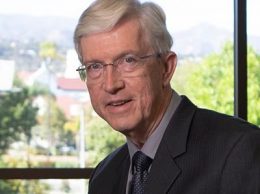Opinion: Election didn’t change California’s balance of power
By Rosanna Carvacho, Teresa Cooke and Gianna Setoudeh
This past election was one of the most consequential elections in modern history. In the midst of a pandemic, Californians have continued to endure simultaneous crises including wildfires, rising homelessness, lack of affordable housing, racial injustice and climate change impacts, to name a few—all of which were top of mind heading into the election.
More state voters registered to vote in the 2020 election than in the past 80 years (88% of eligible Californians as of October); California set modern-day records for the number of votes cast and voter turnout.
The results make it clear: California remains a blue state and President Donald Trump’s potential reelection spurred hyperpartisanship and momentum to turn out the vote—providing ample opportunity for voters to weigh in on numerous congressional, state Senate and Assembly seats and state and local measures.
The main focus in California’s election is just how liberal the Legislature will become. Statewide initiatives also received a significant amount of attention and record spending into respective campaigns (notably Proposition 22, a measure affording gig economy companies the ability to continue treating drivers as independent contractors).
With about 2 million votes left to count as of noon on Nov. 10, we provide an overview of results and implications on the balance of power in the state Capitol:
State Legislature: Senate
Senate Democrats went into the election with control of the upper house by two seats above a two-thirds supermajority, 29 of the 40 seats.
Every two years, half of the Senate seats are up for election. There were four key races, all of which are seats currently held by Republicans that Democrats were trying to flip.
Fairly unique to California is two members of the same party on the general election ballot. The most hotly contested was in San Francisco, where Sen. Scott Wiener had a challenger on the left—claiming that he was not sufficiently liberal.
There was also a Democrat-on-Democrat race for an open seat in Santa Clara County, where County Supervisor Dave Cortese faced off against Ann Ravel, former chair of the Federal Elections Commission appointed by President Barack Obama. Cortese, strongly backed by unions, has a comfortable lead.
When all results are in, the Democratic majority will grow, at a minimum, to 31 out of 40 seats.
State Legislature: Assembly
Assembly Democrats headed into the election with a large supermajority in the lower house, currently holding 61 of the 80 seats, with one Independent, one vacancy and Republicans holding 17 seats.
Unlike the Senate, all Assembly seats are up for election every two years. However, only a handful of Assembly districts were in play.
It’s
anticipated the Assembly makeup will not change and the Republicans may hold
onto all of the 17 seats, fill the Republican vacancy and pick up a seat,
bringing their caucus to 19.
Of the 11 Democrat-on-Democrat races, nine were incumbents who were all
reelected. The remaining two races were to fill seats held by Democrats running
for other offices; this will not impact the makeup of the caucus.
Of the two Republican-on-Republican races, one was to hold a seat held by a Republican running for Congress (having no impact on the caucus makeup); however, the other race was to take back a seat lost in 2018 to Democratic Assemblymember Christy Smith, who is running for Congress and not seeking reelection. The primary had five Democrats and two Republicans, which led to two Republicans securing the top two spots for the general election ballot—a big loss in the primary for Democrats.
Also in the primary, two sitting Orange County Republicans lost their reelection bids. Assemblymember Tyler Diep, criticized for not being conservative enough, lost the primary to former Sen. Janet Nguyen. Assemblymember Bill Brough, facing sexual harassment allegations, did not receive Republican Party endorsement and failed to advance. The Republican candidates won both races.
The Republican Party’s internal struggles as to its future in a very liberal state remain top of mind. In 2019, moderate Assemblymember Brian Maienschein, recently reelected to represent his San Diego district as a Republican, switched parties to Democrat, increasing the Democratic majority from 59 to 60. Also, in 2019, former Assembly Republican Leader Chad Mayes changed parties to Independent after previously being ousted as Republican leader. The Republican Party put up candidates to challenge both, without success.
In this phase of final vote counting, it appears Assembly Democrats will not pick up any seats and will lose one seat, bringing the makeup of the Assembly to 60 Democrats, 19 Republicans and one Independent—leaving no change to the party control of either house of the Legislature and no immediate change in legislative leadership.
When there are losses however, leadership positions are often at risk.
• Rosanna Carvacho is a shareholder at Brownstein Hyatt Farber Schreck. Teresa Cooke and Gianna Setoudeh are policy advisors at the firm.











